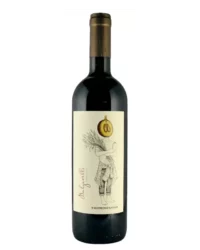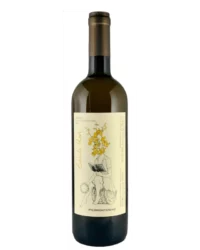Ficomontanino Winery
The Ficomontanino winery is located in Chiusi, south of the province of Siena on the border with Lazio and Umbria. If you try to direct your gaze in all directions from the highest point of the company, the three regions are clearly distinguished by the different colors of the vegetation, the blanket of air and the sunlight that combine. Tuscany inspires strength, Umbria the purity of rock water, Lazio the sense of depth.
The hill dominates the Val di Chiana, and was an island when the valley was still a sea in the center of prehistoric Italy. For millennia, a border area like this has been affected by the cultural influences of different peoples, the Etruscans and Romans above all, but also by the great medieval and Renaissance tradition of the Grand Duchy of Tuscany on one side and the Papal State on the other. The property was purchased in the 70s and today it has about 11 hectares of vineyards. The first uniqueness compared to a typical Tuscan area is the high percentage of sand in the land. A lot of silica, a lot of light that it infuses into the vegetation: the same that is found in the grapes. To preserve it and pass it on to the wines, the healthy bunches are brought to the cellar, from plants grown in a natural way, supporting their nature through a few interventions. Astral calendars, winds and humidity are followed, and the processes are accompanied by natural products used in biodynamics and homeopathy.

The Ficomontanino winery is located in Chiusi, south of the province of Siena on the border with Lazio and Umbria. If you try to direct your gaze in all directions from the highest point of the company, the three regions are clearly distinguished by the different colors of the vegetation, the blanket of air and the sunlight that combine. Tuscany inspires strength, Umbria the purity of rock water, Lazio the sense of depth.
The hill dominates the Val di Chiana, and was an island when the valley was still a sea in the center of prehistoric Italy. For millennia, a border area like this has been affected by the cultural influences of different peoples, the Etruscans and Romans above all, but also by the great medieval and Renaissance tradition of the Grand Duchy of Tuscany on one side and the Papal State on the other. The property was purchased in the 70s and today it has about 11 hectares of vineyards. The first uniqueness compared to a typical Tuscan area is the high percentage of sand in the land. A lot of silica, a lot of light that it infuses into the vegetation: the same that is found in the grapes. To preserve it and pass it on to the wines, the healthy bunches are brought to the cellar, from plants grown in a natural way, supporting their nature through a few interventions. Astral calendars, winds and humidity are followed, and the processes are accompanied by natural products used in biodynamics and homeopathy.






